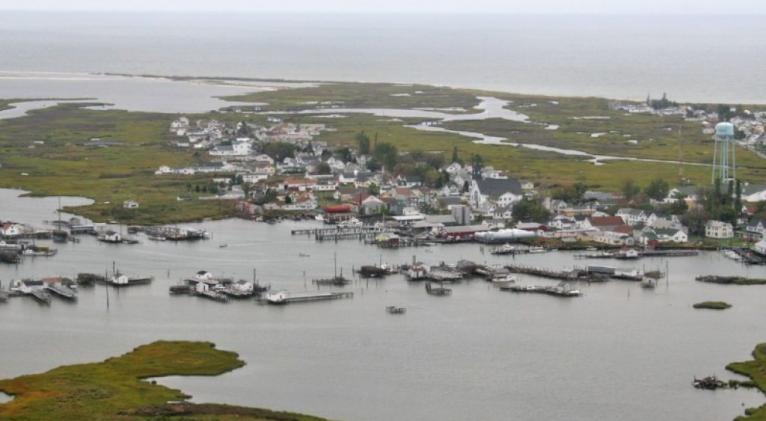Rising seas expected to sink islands near US capital in 50 years
especiales

This could happen to much of the main island – located 170 kilometres south-east of Washington DC – in as little as 50 years, unless defences are built to hold back the rising tides.
“What’s amazing is that this is a short flight away from Washington DC, so it’s right in our backyard,” says David Schulte of the US Army Corps of Engineers in Norfolk District, Virginia, who led the investigation. “A lot of people, especially in America, think climate change will happen to someone else, somewhere far away,” he says.
Schulte and his colleagues compared the islands’ current size to that seen on maps going back to 1850, when they covered 875 hectares. They found that they have since shrunk to a third of that, at just 320 hectares.
They then used historic land-loss rates and predicted sea-level rises to project into the future.

Climate change means that much of the main inhabited island, including the town of Tangier, will be under water in as little as 50 years, they found. Two neighbouring islands – Goose and Uppards – will also probably be lost by 2038 and 2113 respectively, they say.
The biggest problem, says Schulte, is that the islands sit in a “hotspot” for sea-level rise that affects Chesapeake, the largest tidal estuary in the US.
Globally, sea levels rose an average of 1.7 millimetres per year between 1901 and 2010. But along the eastern seaboard of the US, the rises have been higher, at 3.8 millimetres a year – and in Chesapeake Bay higher still, at 4.4 millimetres a year.
The reason, says Schulte, is a weakening of currents off the east coast called the North Atlantic Oscillation and the Atlantic Meridional Overturning Circulation. The combined effect causes disproportionate rises in sea level.
Can we save the islands?
But all is not yet lost. By protecting against the waves with solid breakwaters and artificial sand dunes, it may be possible to prolong the life of the islands, says Schulte.
This would also include re-establishing former ridges and building new dunes planted with trees to create safe, high spots on the inhabited island 2 to 3 metres above sea level. “That would buy them quite a bit of time,” he says.
As well as saving the town of Tangiers, the plan could help save vital wetland habitats on neighbouring uninhabited islands that teem with valuable seagrasses, which host breeding blue crabs – the main source of income for the islanders.
If such a plan was given the go-ahead and funded by Congress, it could be implemented in as little as one or two years, says Schulte.

Having periodically worked on the island himself for 10 years, he says the residents are in no mood to leave. “They’re descendants of the original settlers in the 1700s and still have an original accent,” he says. “They definitely don’t want to leave.”
“We have high confidence that the changes in sea level are real, our carbon dioxide is contributing, and this will get worse if we continue with business as usual,” says Richard Alley, who studies climate change and glaciology at Pennsylvania State University.
“The coast has been marching back along Cape Cod, and lighthouses and other features are being moved or lost,” he says. “Some places are being abandoned rather than rebuilt after storm surges.”
“While globally we can say that the sea-level rise won’t exceed 1.5 metres, the picture can be different locally,” says Anders Levermann of the Potsdam Institute for Climate Impact Research in Germany. “Along the North American coast, changes in ocean currents such as the Gulf Stream lead to additional local sea-level rise, and these new results show that the people from Tangier Island might become US sea-level refugees as a result.”
Journal reference: Nature Scientific Reports, DOI: 10.1038/srep17890
Read more: “Climate downgrade: Sea level rise”













Add new comment